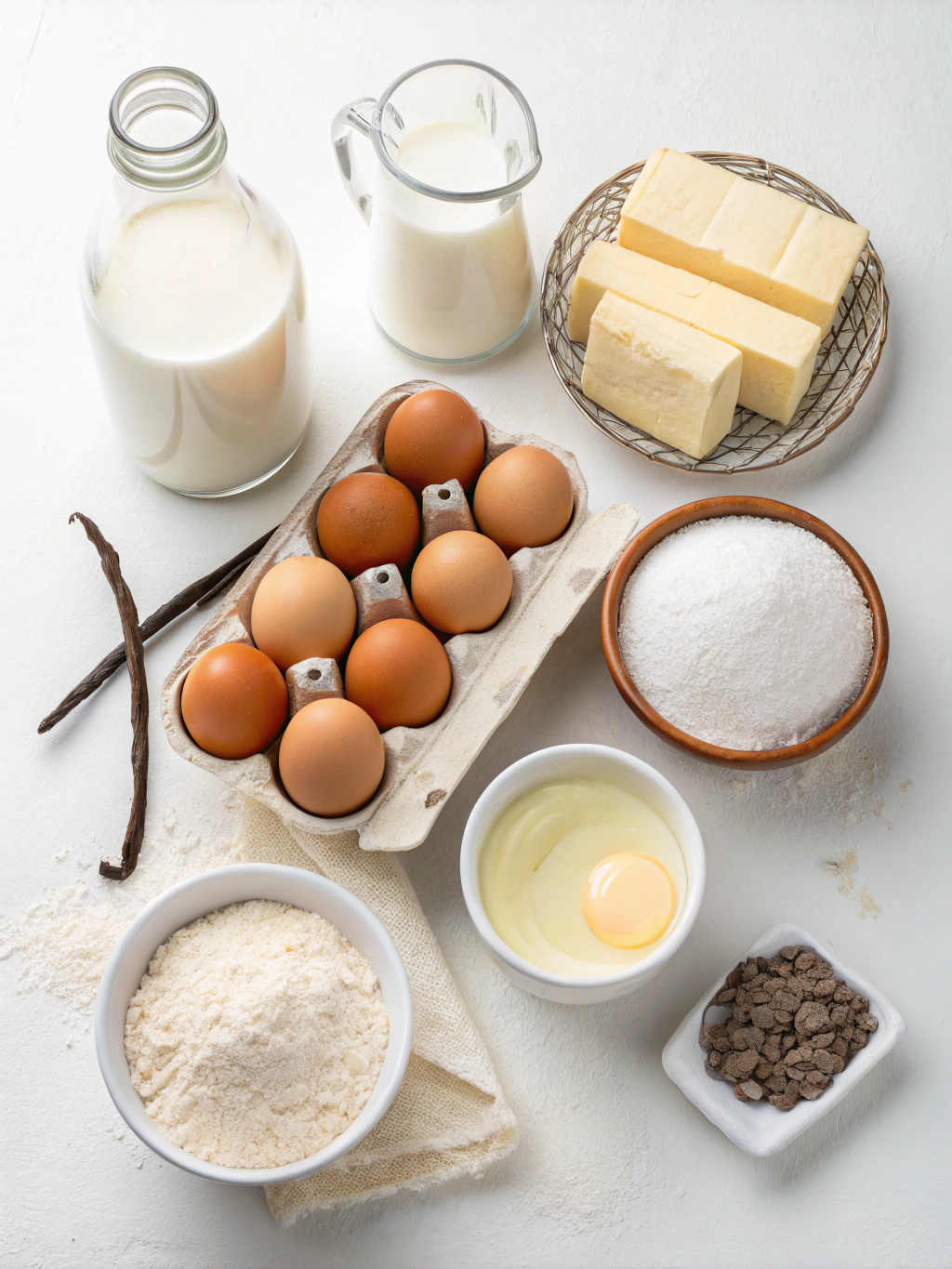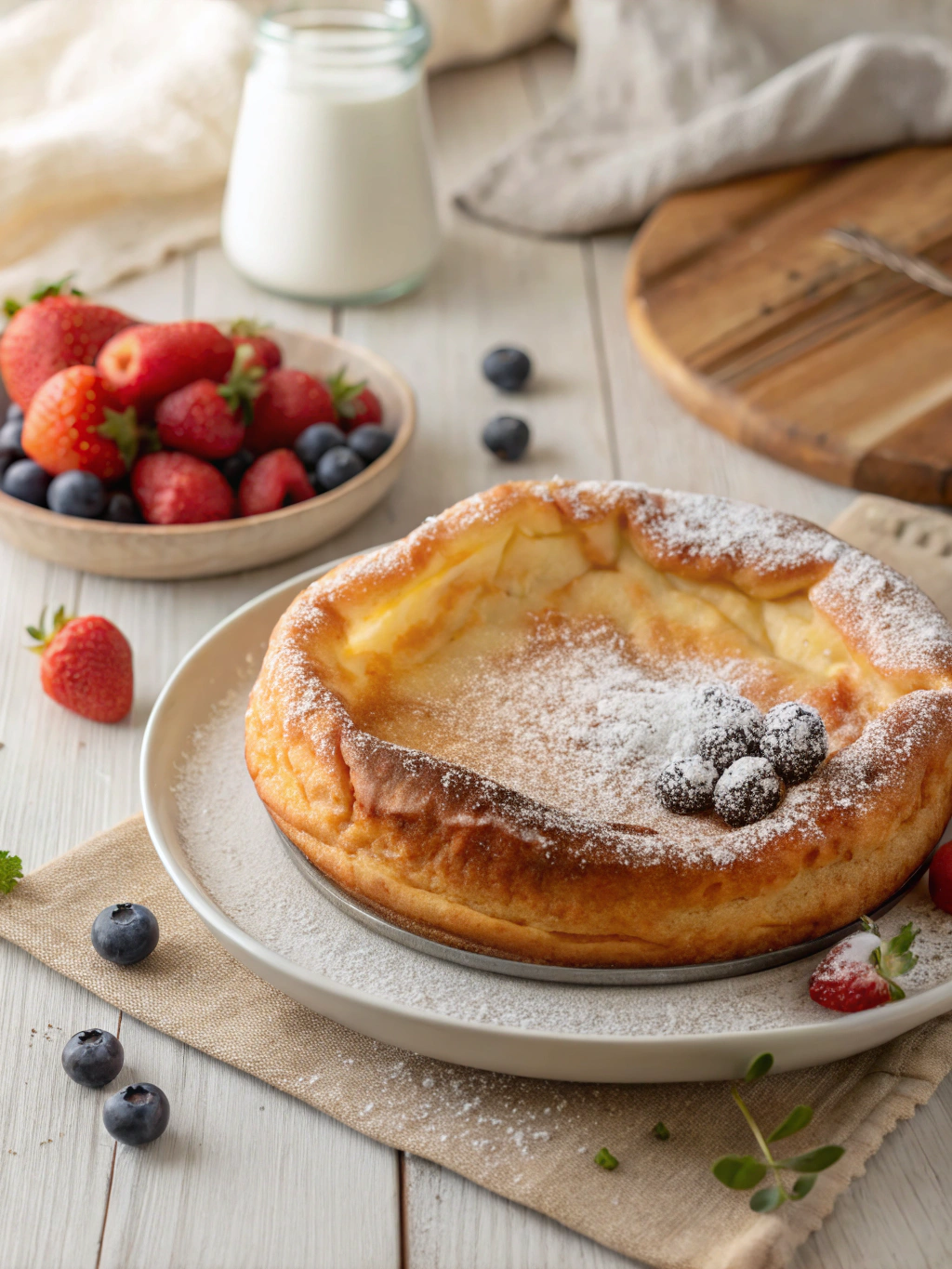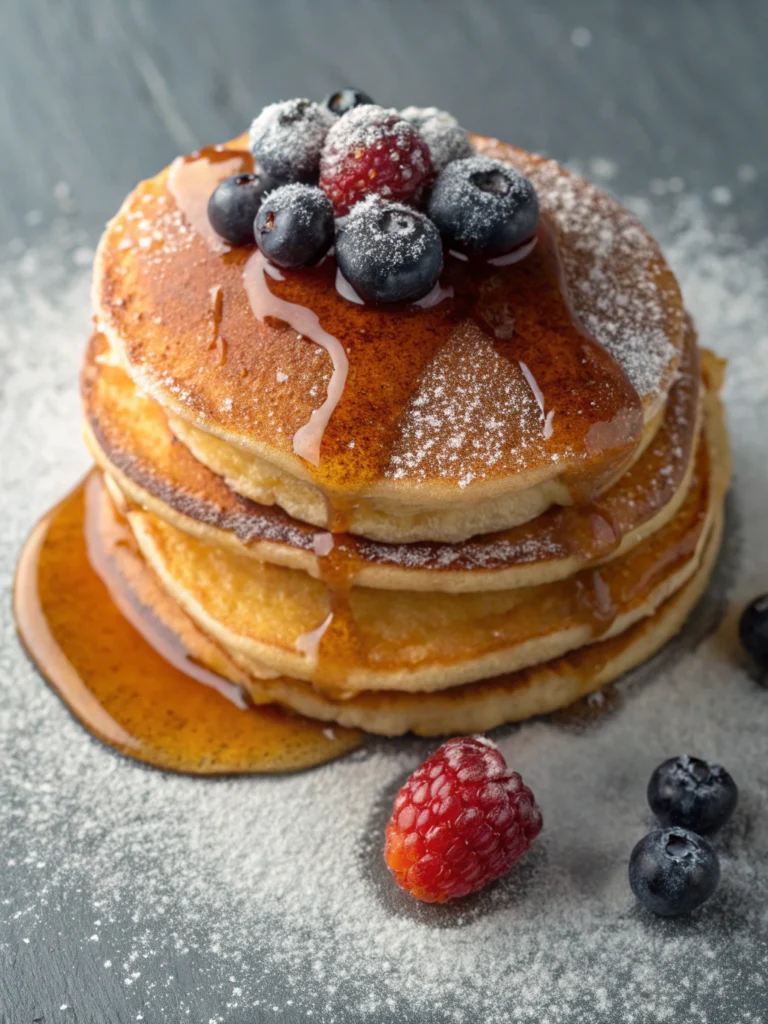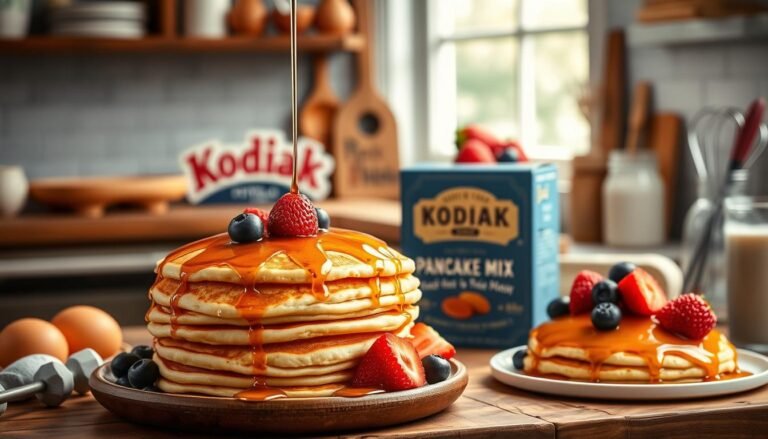german pancake recipe: irresistible fluffy bliss for breakfast
Introduction
What if you could turn a simple pantry staple into a show‑stopping breakfast that rivals the most elegant brunch spreads? The answer lies in a surprisingly quick and easy technique that transforms eggs, flour, and butter into a towering, airy delight. This german pancake recipe delivers a baked pancake that puffs up in the oven, creating a cloud‑like surface and a golden, caramelized edge. In the next few minutes you’ll learn how to master the classic Dutch Baby, why the high oven temperature matters, and which small tweaks can make the dish even more nutritious. Ready to explore a breakfast that feels both nostalgic and modern?
Ingredients List

- 6 large eggs – provide structure and lift for the fluffy batter.
- 1 cup milk – adds moisture and a hint of richness.
- 1 cup all‑purpose flour – creates the base of the baked pancake.
- 5 tablespoons butter – melts into the pan, giving the crust its crispness.
- ½ cup granulated sugar – sweetens the batter and helps caramelize the edges.
- 1 teaspoon vanilla extract – imparts a warm, aromatic note.
- a pinch of salt – balances the sweetness and enhances flavor.
If you prefer a dairy‑free version, replace the milk with almond or oat milk and use a plant‑based butter substitute. For a lower‑sugar option, halve the granulated sugar and add a touch of maple syrup for natural sweetness.
Timing
Prep Time: 5 minutes
Cook Time: 20 minutes
Total Time: 25 minutes
Step‑By‑Step Instructions
Step 1 – Heat the Pan and Melt Butter
Preheat your oven to 425°F (220°C). Place a 9×13‑inch baking dish inside the oven and let the butter melt completely, creating a sizzling base for the batter.
Step 2 – Blend the Batter
While the butter melts, combine the eggs, milk, flour, sugar, vanilla extract, and salt in a blender. Blend until the mixture is smooth and slightly frothy, ensuring no lumps remain.
Step 3 – Add Batter to the Hot Dish
Carefully remove the hot baking dish, pour the blended batter over the melted butter, and immediately return it to the oven. The sudden heat triggers the puff‑up effect.
Step 4 – Bake Until Golden
Bake for 20‑25 minutes. The edges should turn a deep gold and the center will rise dramatically, resembling a puffed soufflé.
Step 5 – Finish and Serve
Remove the pan from the oven, dust the surface with powdered sugar, and serve warm. Pair with maple syrup, fresh berries, or a dollop of whipped cream for a classic breakfast experience.
Nutritional Information
- Calories: 324 kcal per serving
- Carbohydrate: 35 g
- Protein: 10 g
- Fat: 16 g
- Saturated Fat: 9 g
- Trans Fat: 0 g
- Cholesterol: 216 mg
- Sodium: 122 mg
- Sugar: 17 g
- Unsaturated Fat: 7 g
Healthier Alternatives for the Recipe
- Swap half the butter with a light olive‑oil spread to cut saturated fat.
- Use whole‑grain flour instead of all‑purpose for added fiber.
- Replace granulated sugar with a natural sweetener like stevia or erythritol, keeping the same volume.
- Add a tablespoon of pureed pumpkin for extra vitamin A without altering texture.
- Increase the protein boost by mixing in ¼ cup of cottage cheese into the batter.
Serving Suggestions
- Serve the fluffy dome with a drizzle of honey and a sprinkle of toasted almond slivers for crunch.
- Top with sautéed apples, cinnamon, and a splash of caramel for an autumn‑inspired twist.
- Pair with smoked salmon, crème fraîche, and chives for a savory breakfast variant.
- Cut into bite‑size squares and serve at brunch buffets alongside fresh orange juice.
- Accompany the baked pancake with a side of Greek yogurt and mixed berries for a balanced meal.
Common Mistakes to Avoid
- Do not open the oven door during baking; the rapid temperature drop prevents the pancake from puffing.
- Avoid using cold butter in the pan; it must be fully melted to create the crust.
- Do not over‑mix the batter once flour is added; over‑mixing can make the texture dense.
- Skip adding too much sugar, which can cause the edges to burn before the center sets.
- Do not use a shallow pan; the 9×13‑inch dish provides the ideal surface area for even rise.
Storing Tips for the Recipe
- Leftover pieces can be refrigerated in an airtight container for up to two days.
- To reheat, place a slice on a baking sheet and warm in a 350°F oven for five minutes.
- Freeze individual portions wrapped in parchment, then place in a zip‑top bag; they keep for up to three months.
- When reheating from frozen, bake at 375°F for 10‑12 minutes to restore crisp edges.
- Store any leftover butter sauce separately to avoid soggy crusts.
Conclusion
The german pancake recipe proves that a quick, easy breakfast can also be a show‑stopping centerpiece. By mastering the high‑heat bake, you’ll consistently achieve a fluffy, golden‑brown baked pancake that impresses guests and satisfies cravings. Give this Dutch Baby a try tomorrow morning, share your results in the comments, and explore more breakfast inspirations on our Pancake collection. Looking for a sugar‑free twist? Check out this guide on Pancake to learn about natural alternatives that keep the flavor while reducing the sweet load. Your next breakfast adventure begins here.

german pancake recipe: irresistible fluffy bliss for breakfast
Ingredients
Equipment
Method
- Preheat oven to 425°F (220°C) and place the butter in a 9×13‑inch baking dish; let it melt in the hot oven.
- In a blender combine eggs, milk, flour, sugar, vanilla and salt; blend until smooth.
- Carefully remove the hot dish, pour the batter over the melted butter, and immediately return to the oven.
- Bake 20‑25 minutes until the edges are golden and the pancake is puffed.
- Remove, dust with powdered sugar, and serve warm with syrup or fresh fruit.
FAQs
Can I use a different pan size? Yes, a similarly sized skillet works, but a 9×13‑inch dish ensures even puffing.
Is the batter safe to prepare ahead of time? The batter can sit for up to 30 minutes at room temperature, but a longer wait may reduce puffiness.
What’s the difference between a Dutch Baby and a regular pancake? The Dutch Baby is baked, resulting in a puffed, oven‑rised texture, while traditional pancakes are cooked on a stovetop.
Can I add toppings before baking? Adding fruit or nuts before baking can cause uneven rise; it’s best to add them after the pancake is removed from the oven.
How many servings does the recipe yield? The recipe yields 6 servings, each providing a balanced mix of carbohydrates, protein, and fat.


